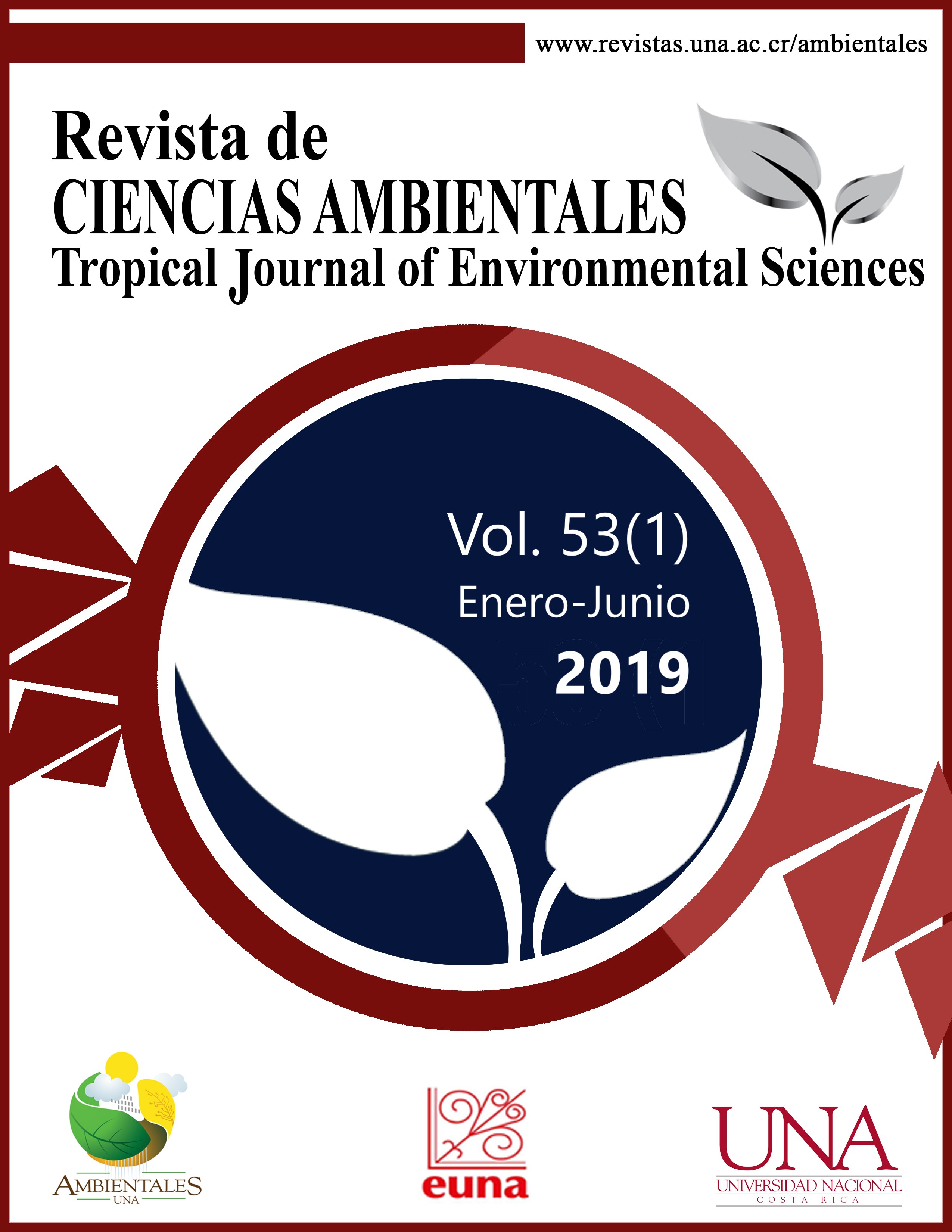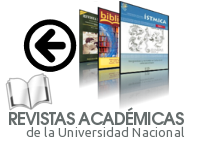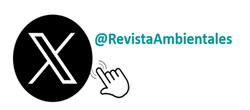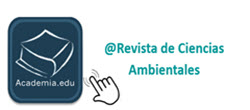Molecular Identification and Physiological Characteristics of Trichoderma Isolates for the Biocontrol of Two Pathogens in Pineapple
DOI:
https://doi.org/10.15359/rca.53-1.7Keywords:
Biological control; Fusarium oxysporum; intermicrosatélites; Pectobacterium carotovorum; TEF1-α.Abstract
Environmental pollution, associated with the excessive use of pesticides, has prompted the need for alternative practices in agriculture, such as the application of biological agents for controlling plant pathogens. Trichoderma is an agent that is amply used for biocontrol; however, the fungus is difficult to identify at the species level strictly by morphological examination. Additionally, the genus forms species complexes, which can make species identification much more challenging. Effective biocontrol products have to be easily reproducible in vitro, generate conidia with high germination rates, and demonstrate effective antagonistic activity against a target pathogen. The objective of this study was to determine if these desirable biocontrol traits are correlated with the genetic relationships of 15 Trichoderma isolates. We analyzed 15 monosporic Trichoderma isolates native to the northern region of Costa Rica; they had known antagonistic activity against pathogens associated with pineapple. We measured the growth rate and germination percentage. Mean growth rates varied from 0.90 to 1.20 mm · h-1 at 25 ºC. Germination percentage varied greatly from 3 % to 94 %. Species were identified by sequencing the translation elongation factor (TEF1-α) gene, and four species were identified: T. reesei, T. spirale, T. asperellum/asperelloides, and T. koningiopsis. Genetic distances within and among species were measured using six intermicrosatellites (ISSR). These distances showed high inter- and intraspecific diversity. Under a control lab environment, isolate 8a (T. reesei) showed the largest antagonistic effect against two pineapple pathogens, where there was a 30 % growth inhibition of Fusarium oxysporum and a 63 % growth inhibition of Pectobacterium carotovorum. A Mantel test showed that there was no correlation between genetic distances and Euclidean values for growth parameters and antagonistic response. We concluded that these traits were not species‑dependent; however, these isolates had high genetic diversity in a small, narrow geographical area with important biocontrol traits of interest.
References
Atanasova, L., Jaklitsch, W. M., Komon-Zelazowska, M., Kubicek, C. P., & Druzhinina, I. S. (2010). Clonal species Trichoderma parareesei sp. nov. likely resembles the ancestor of the cellulase producer Hypocrea jecorina/T. reesei. Applied and Environmental Microbiology, 76(21), 7259–7267. http://doi.org/10.1128/AEM.01184-10
Bidochka, M. J., Kamp, A. M., Lavender, T. M., Dekoning, J., & De Croos, J. N. A. (2001). Habitat Association in Two Genetic Groups of the Insect-Pathogenic Fungus Metarhizium anisopliae: Uncovering Cryptic Species? Applied and Environmental Microbiology, 67(3), 1335–1342. http://doi.org/10.1128/AEM.67.3.1335-1342.2001
Castresana, J. (2000). Selection of conserved blocks from multiple alignments for their use in phylogenetic analysis. Molecular Biology and Evolution, 17(4), 540–552.
Chaverri, P., Branco-Rocha, F., Jaklitsch, W., Gazis, R., Degenkolb, T., & Samuels, G. J. (2015). Systematics of the Trichoderma harzianum species complex and the re-identification of commercial biocontrol strains. Mycologia, 107(3), 558–590. http://doi.org/10.3852/14-147
Chaverri, P., Castlebury, L. A., Samuels, G. J., & Geiser, D. M. (2003). Multilocus phylogenetic structure within the Trichoderma harzianum/Hypocrea lixii complex. Molecular Phylogenetics and Evolution, 27(2), 302–313. http://doi.org/10.1016/S1055-7903(02)00400-1
Consolo, V. F., Mónaco, C. I., Cordo, C. A., & Salerno, G. L. (2012). Characterization of novel Trichoderma spp. isolates as a search for effective biocontrollers of fungal diseases of economically important crops in Argentina. World Journal of Microbiology & Biotechnology, 28(4), 1389–1398. http://doi.org/10.1007/s11274-011-0938-5
Díaz, B. M., & Lecuona, R. E. (1995). Evaluación de cepas nativas del hongo entomopatógeno Beauveria bassiana Bals. (Vuill.) (Deuteromicotina) como base para la selección de bioinsecticidas contra el barrenador Diatraea saccharalis (F.). AgriScientia, 12(0), 33–38. http://doi.org/10.31047/1668.298x.v12.n0.2450
Druzhinina, I. S., Komoń-Zelazowska, M., Atanasova, L., Seidl, V., & Kubicek, C. P. (2010). Evolution and ecophysiology of the industrial producer Hypocrea jecorina (Anamorph Trichoderma reesei) and a new sympatric agamospecies related to it. PLoS ONE, 5(2), e9191–15. http://doi.org/10.1371/journal.pone.0009191
French, E. R., & Herbert, T. (1980). Métodos de investigación fitopatología. San José, Costa Rica: Editorial IICA.
Guigón-López, C., Guerrero-Prieto, V., Vargas-Albores, F., Carvajal-Millán, E., Ávila-Quezada, G. D., Bravo-Luna, L., Roucco, M., Lanzuise, S., Woo, S., Lorito, M. (2010). Identificación molecular de cepas nativas de Trichoderma spp. su tasa de crecimiento in vitro y antagonismo contra hongos fitopatogenos. Revista Mexicana De Fitopatología, 28(2), 87–96.
Howell, C. R. (2003). Mechanisms employed by Trichoderma species in the biological control of plant diseases: the history and evolution of current concepts. Plant Disease, 87(1), 4–10. http://doi.org/10.1094/PDIS.2003.87.1.4
Hoyos-Carvajal, L., Chaparro, P., Abramsky, M., Chet, I., & Orduz, S. (2008). Evaluation of Trichoderma spp. isolates against Rhizoctonia solani and Sclerotium rolfsii under in vitro and greenhouse conditions. Agronomía Colombiana, 26(3), 451–458.
Infante, D., Martínez, B., González, N., & Reyes, Y. (2009). Mecanismos de acción de Trichoderma frente a hongos fitopatógenos. Revista De Protección Vegetal, 24(1), 14–21.
Jaimes Suárez, Y. Y., Moreno Velandia, C. A., & Cotes Prado, A. M. (2009). Inducción de resistencia sistémica contra Fusarium oxysporum en tomate por Trichoderma koningiopsis Th003. Acta Biológica Colombiana, 14(3), 111–120.
Martínez, B., Infante, D., & Peteira, B. (2015). Taxonomía polifásica y variabilidad en el género Trichoderma. Revista De Protección Vegetal, 30, 11–22.
Mukerji, K. G., Manoharachary, C., & Singh, J. (Eds.). (2006). Microbial activity in the rhizosphere (Vol. 7). Berlin Heidelberg, Germany: Springer-Verlag. http://doi.org/10.1007/3-540-29420-1
Oksanen, J., Blanchet, F. G., Kindt, R., Legendre, P., McGlinn, D., Minchin, P. R., et al., (2017). vegan: Community Ecology Package. R package version 2.4-2. Retrieved from https://CRAN.R-project.org/package=vegan
Pal, K. K., & McSpadden, B. (2006). Biological control of plant pathogens. The Plant Health Instructor, 2, 1117–1142. http://doi.org/10.1094/PHI-A-2006-1117-02
Peakall, R., & Smouse, P. E. (2006). GENALEX 6: genetic analysis in Excel. Population genetic software for teaching and research. Molecular Ecology Notes, 6(1), 288–295. http://doi.org/10.1111/j.1471-8286.2005.01155.x
R Core Team. (2016). R: A language and environment for statistical computing. Vienna, Austria: Foundation for Statistical Computing. Retrieved from URL https://www.R-project.org/
Samuels, G. J., Ismaiel, A., de Souza, J., & Chaverri, P. (2012). Trichoderma stromaticum and its overseas relatives. Mycological Progress, 11(1), 215–254. http://doi.org/10.1007/s11557-011-0743-4
Sánchez, A. D., Barrera, V., Reybet, G. E., & Sosa, M. C. (2015). Biocontrol con Trichoderma spp. de Fusarium oxysporum causal del “mal de almácigos” en pre y post emergencia en cebolla. Revista De La Facultad De Agronomía, La Plata, 114(1), 61–70.
Stamatakis, A., Ludwig, T., & Meier, H. (2005). RAxML-III: a fast program for maximum likelihood-based inference of large phylogenetic trees. Bioinformatics, 21(4), 456–463. http://doi.org/10.1093/bioinformatics/bti191
Stayaert, J., Weld, R., Mendoza, A., Kryštofová, S., Šimkovič, M., Varečka, L., & Stewart, A. (2013). Asexual Development in Trichoderma. In P. K. Mukherjee, B. A. Horwitz, U. S. Singh, M. Mukherjee, & M. Schmoll (Eds.), Trichoderma (pp. 87–109). Oxfordshire, UK: CABI International.
Tapsoba, H., & Wilson, J. P. (1997). Effects of temperature and light on germination of urediniospores of the pearl millet rust pathogen, Puccinia substriata var. indica. Plant Disease, 81(9), 1049–1052. http://doi.org/10.1094/PDIS.1997.81.9.1049
Valencia-Abello, J. C., & Castro-Caicedo, B. L. (2004). Aspectos biológicos de aislamientos de Trichoderma sp. antagónicos a Rosellinia bunodes. Cenicafé, 55(1), 16–28.
Vargas, E. (2011). Guía para la identificación y manejo integrado de plagas en piña. Proagroin. Recuperado de https://docplayer.es/storage/25/5321315/1541796562/zQwkrWdAJ-XxDnEdAt7vFQ/5321315.pdf
Vásquez Jiménez, J. (2009). Evaluación de la eficacia in vitro de sustancias químicas y microorganismos antagónicos del género Trichoderma ssp., como herramienta para la toma de decisiones en el control de enfermedades “caso muerte descendente del cultivo de piña Ananas comosus (L) Merr.” San Carlos, Costa Rica.
Verma, P. C., Chakrabarty, D., Jena, S. N., & Mishra, D. K. (2009). The extent of genetic diversity among Vanilla species: Comparative results for RAPD and ISSR. Industrial Crops and Products, 29(2-3), 581–589. http://doi.org/10.1016/j.indcrop.2008.11.006
Watanabe, S., Kumakura, K., Kato, H., Iyozumi, H., Togawa, M., & Nagayama, K. (2005). Identification of Trichoderma SKT-1, a biological control agent against seedborne pathogens of rice. Journal of General Plant Pathology, 71(5), 351–356. http://doi.org/10.1007/s10327-005-0217-0
Wickham, H. (2016). ggplot2. AG Switzerland: Springer International Publishing.
Downloads
Published
How to Cite
Issue
Section
License

This work is licensed under a Creative Commons Attribution-NonCommercial-ShareAlike 4.0 International License.



















